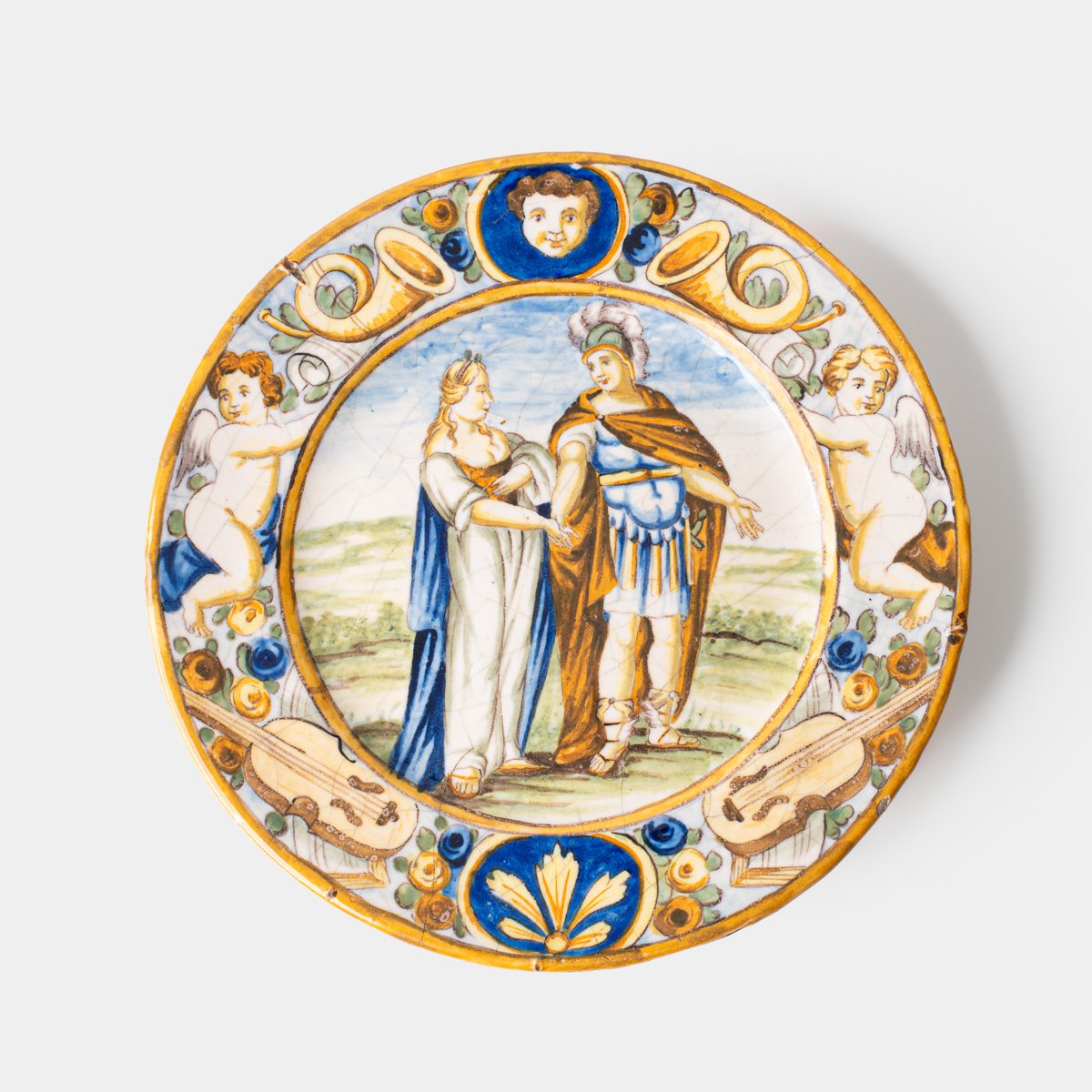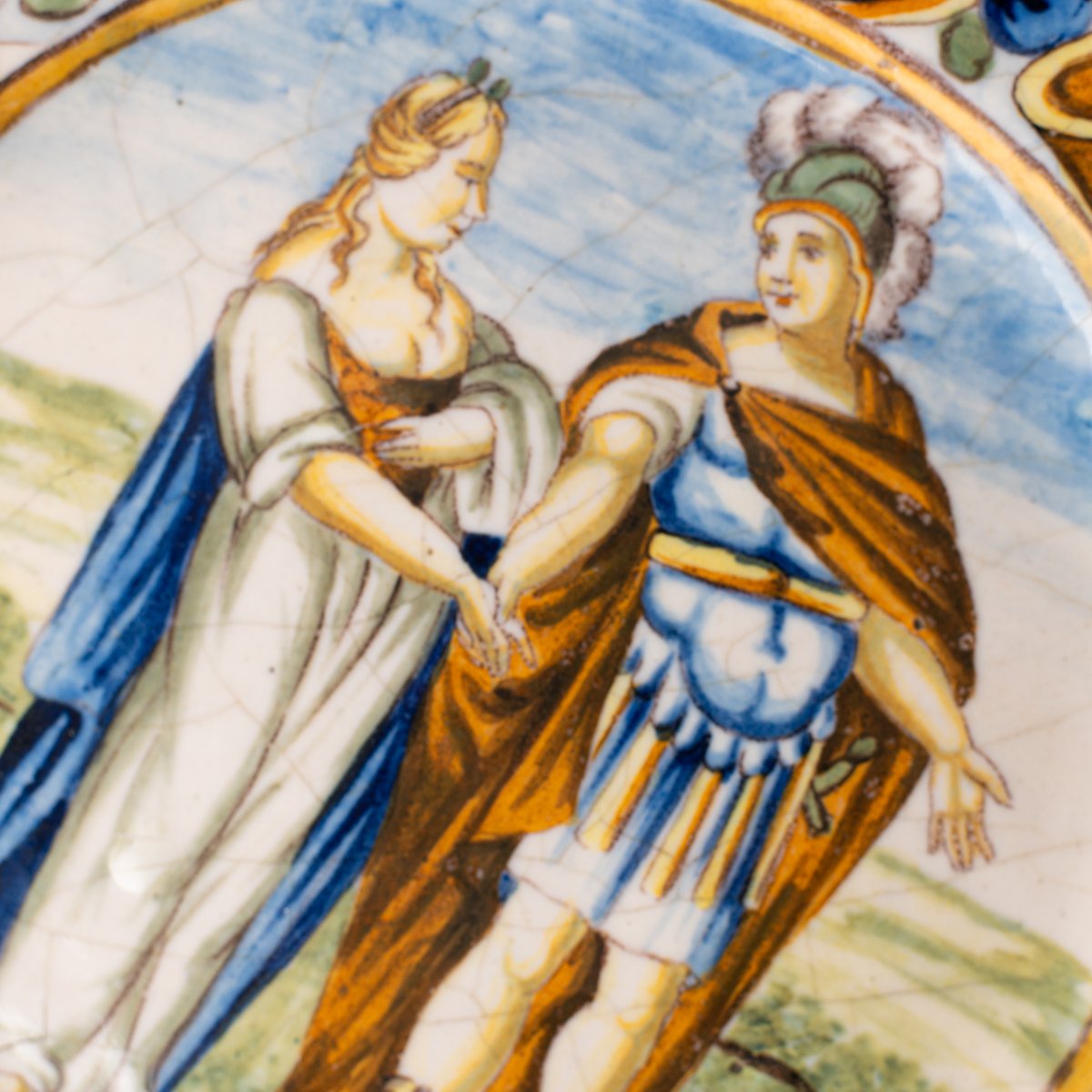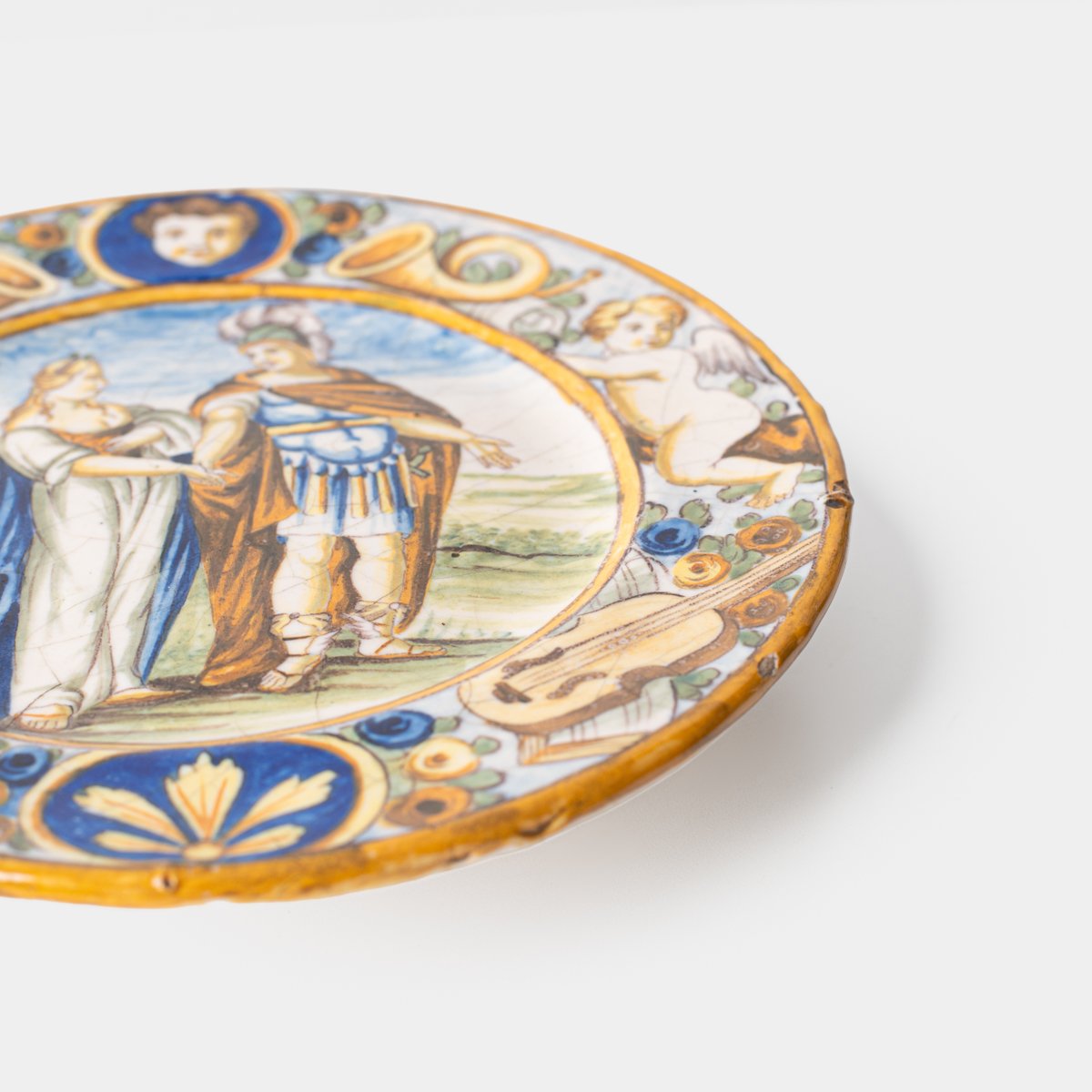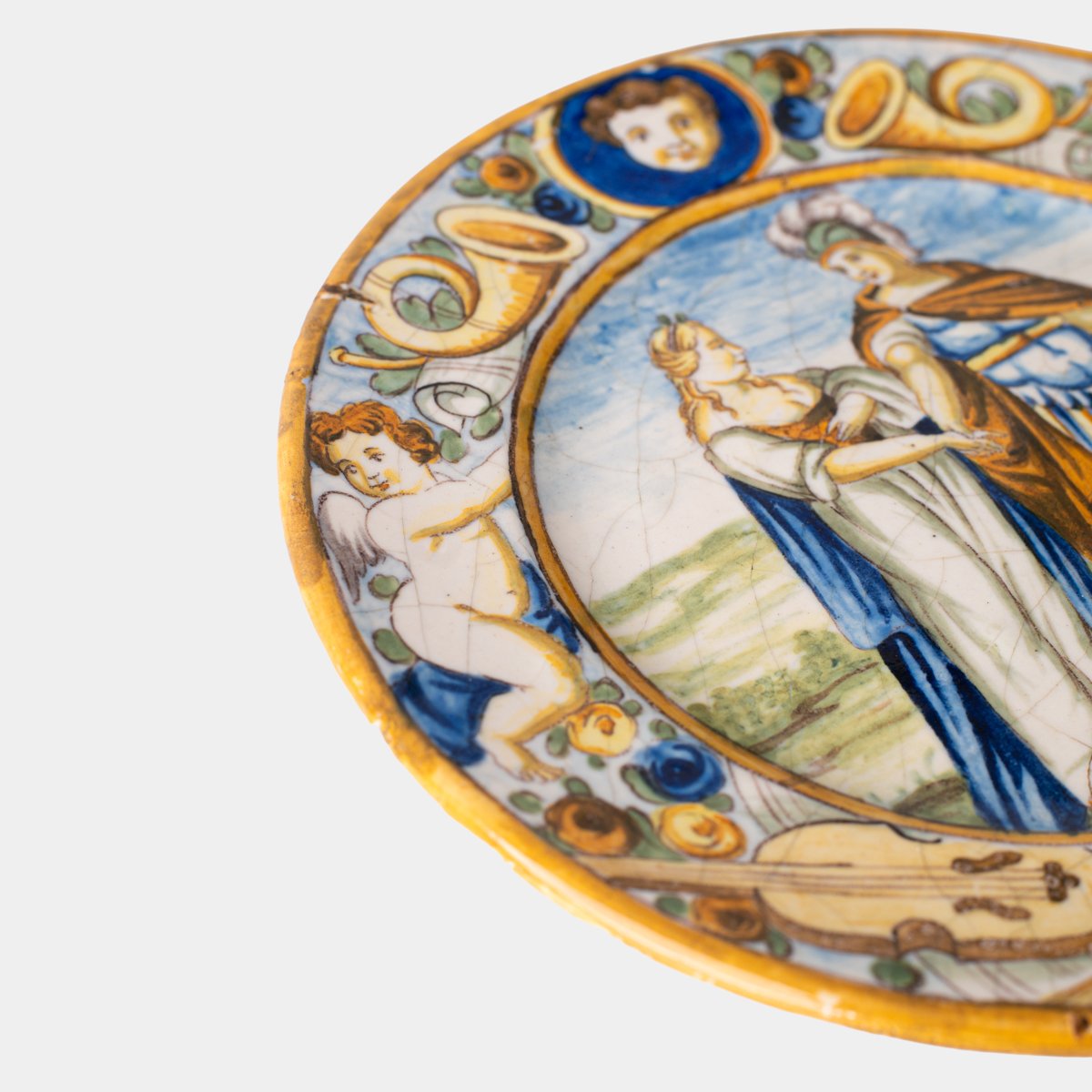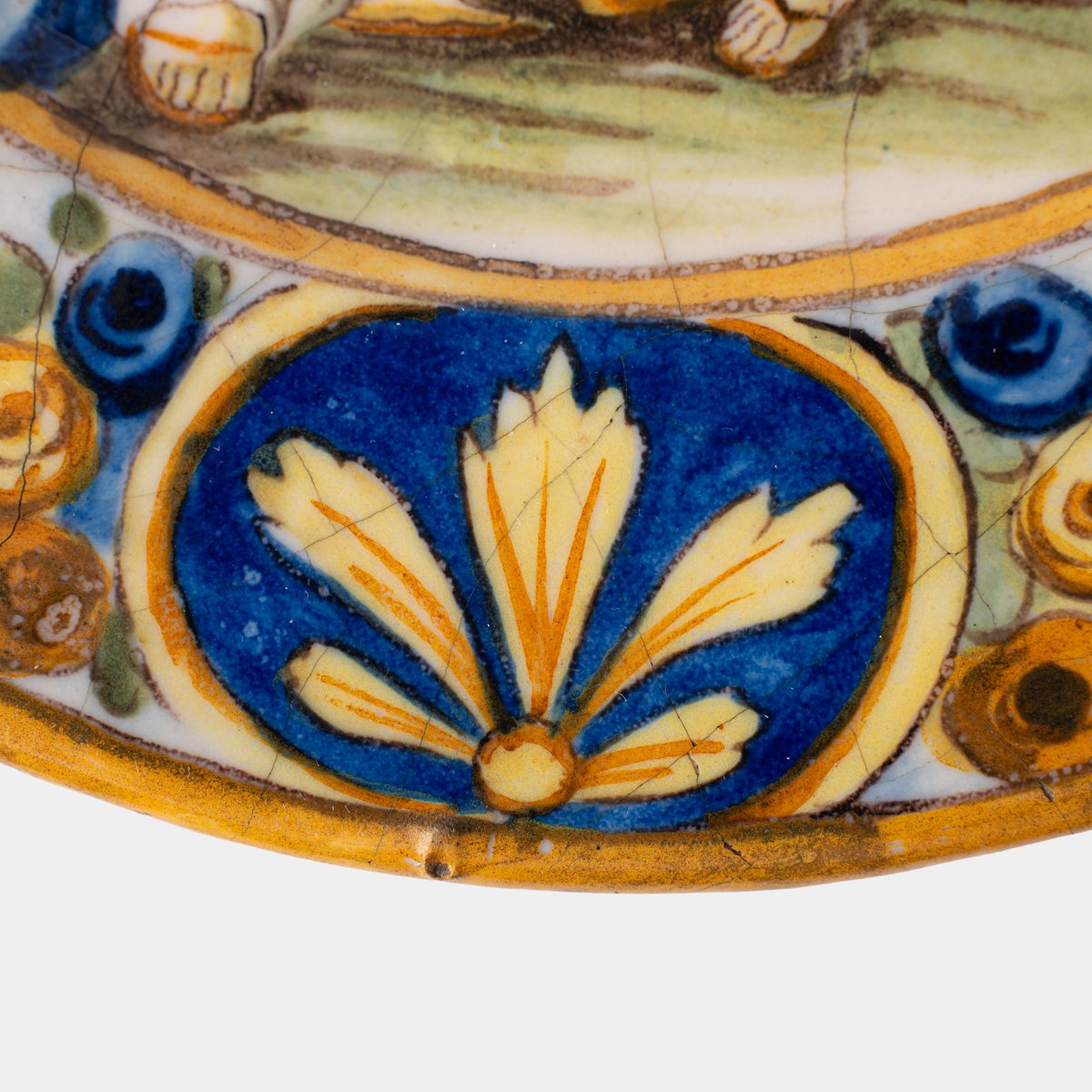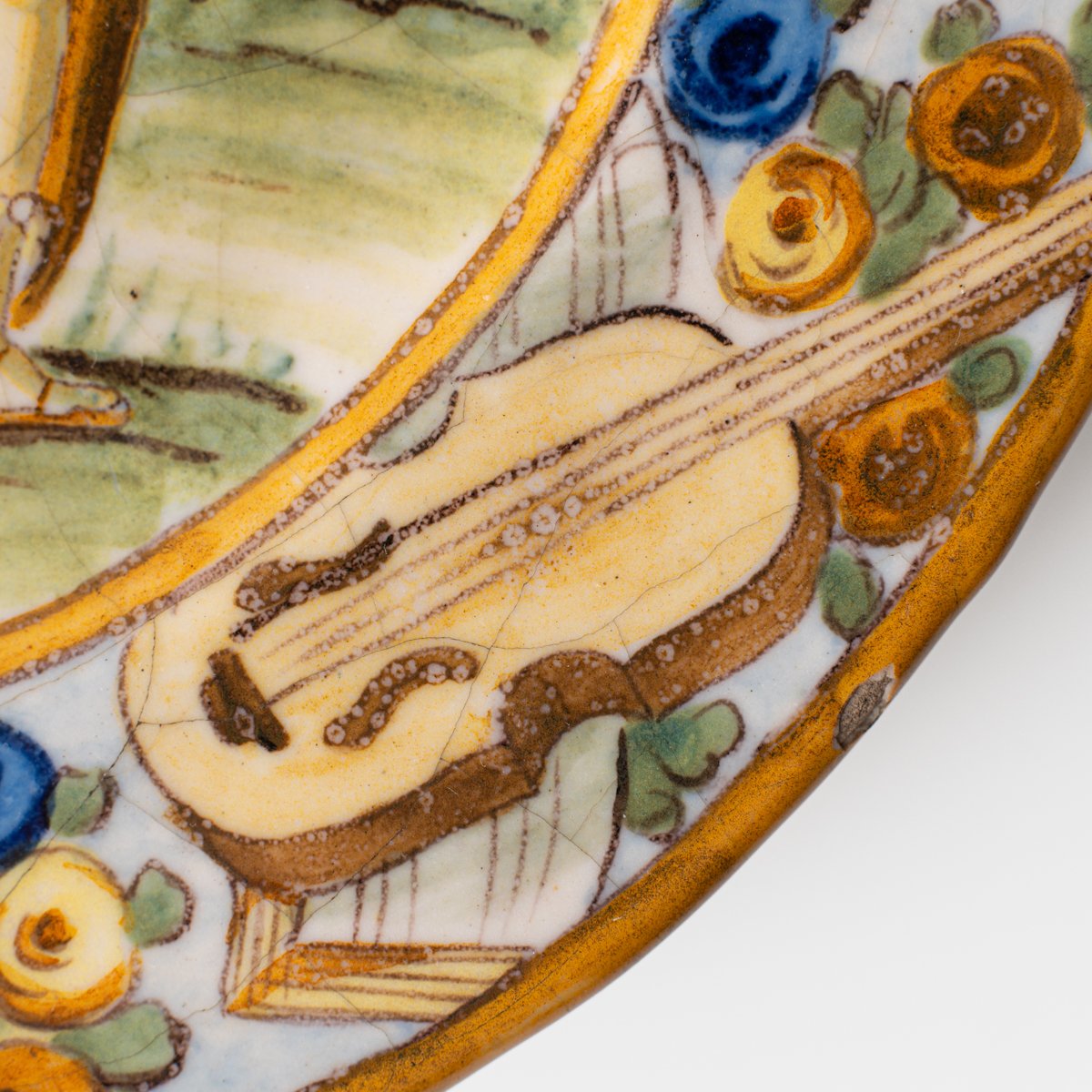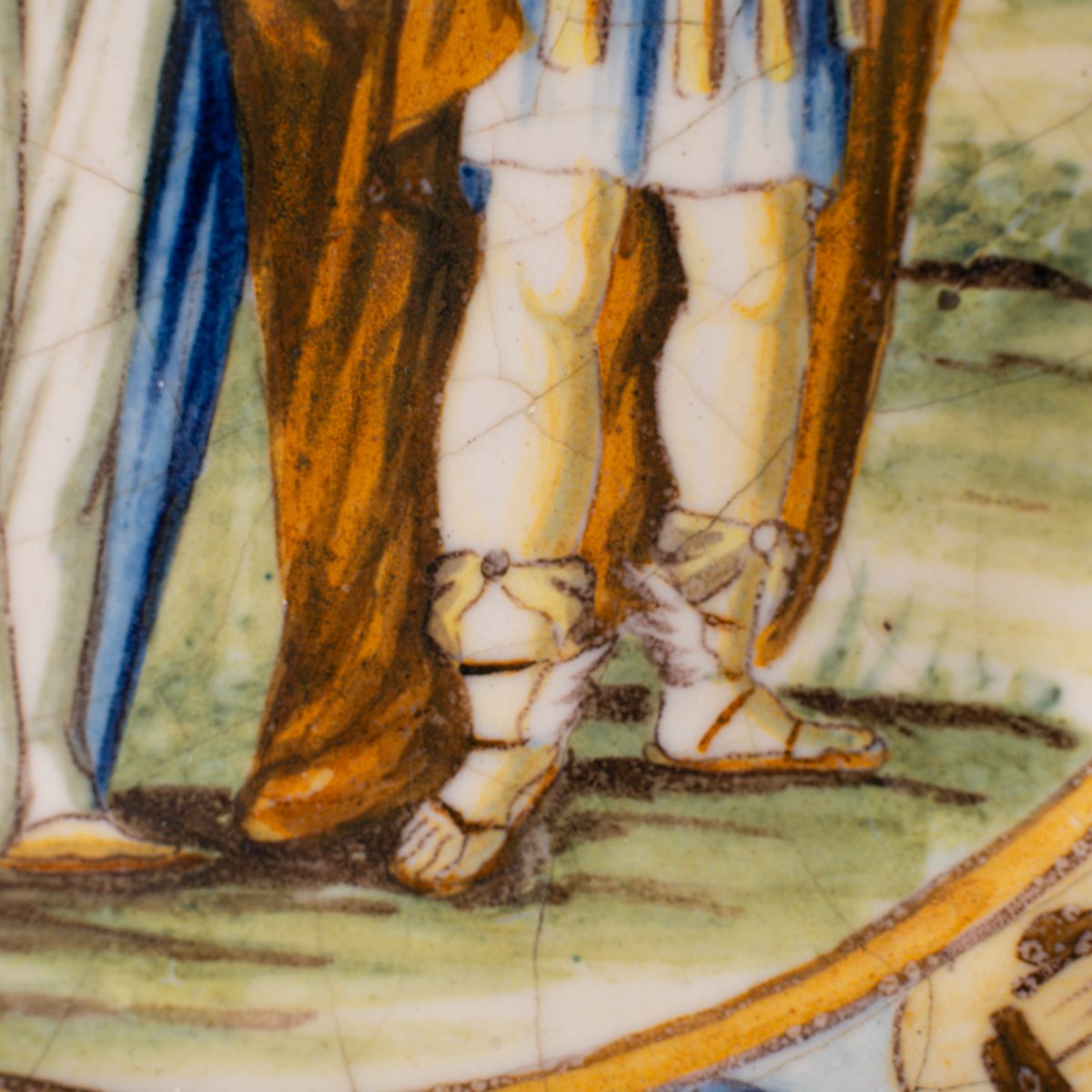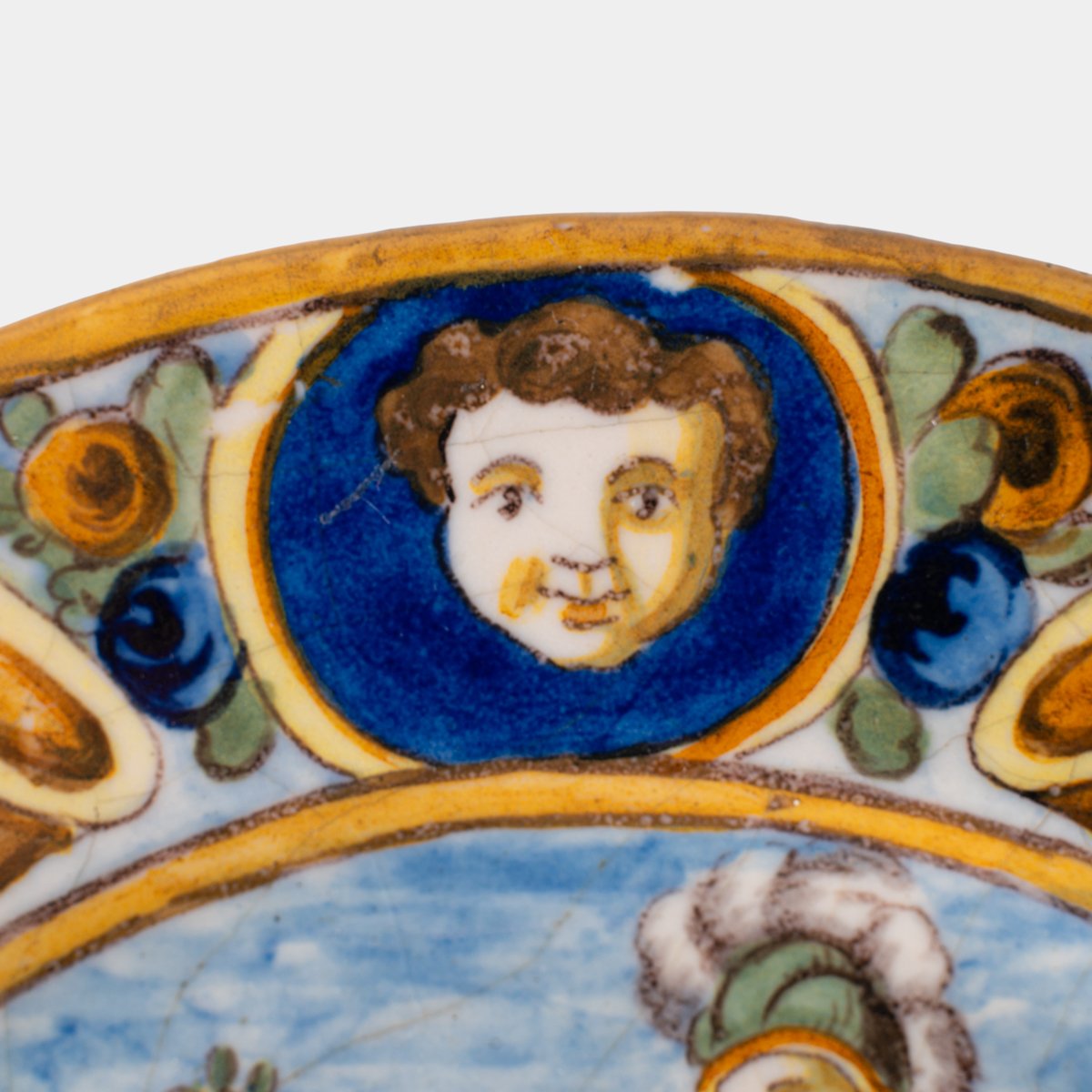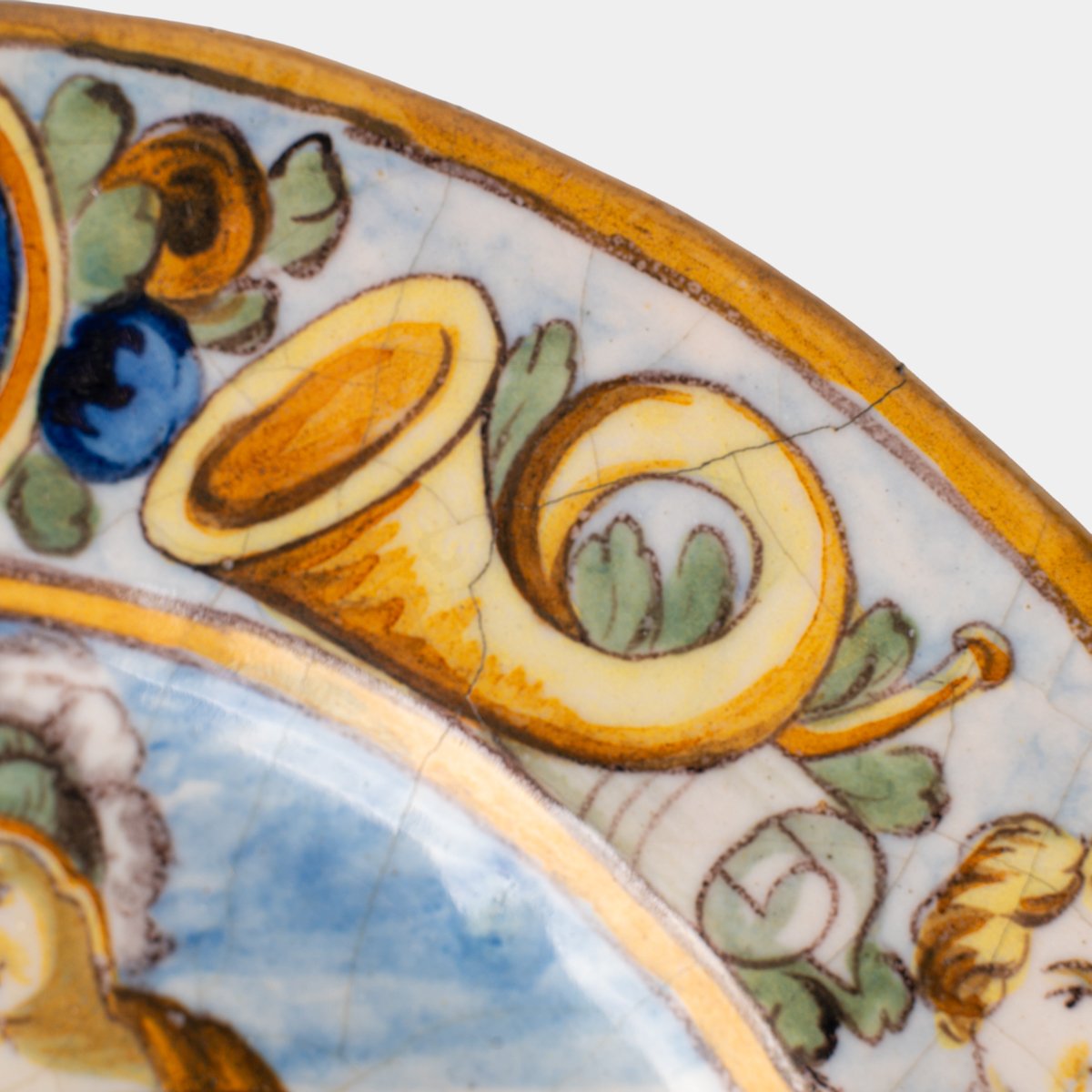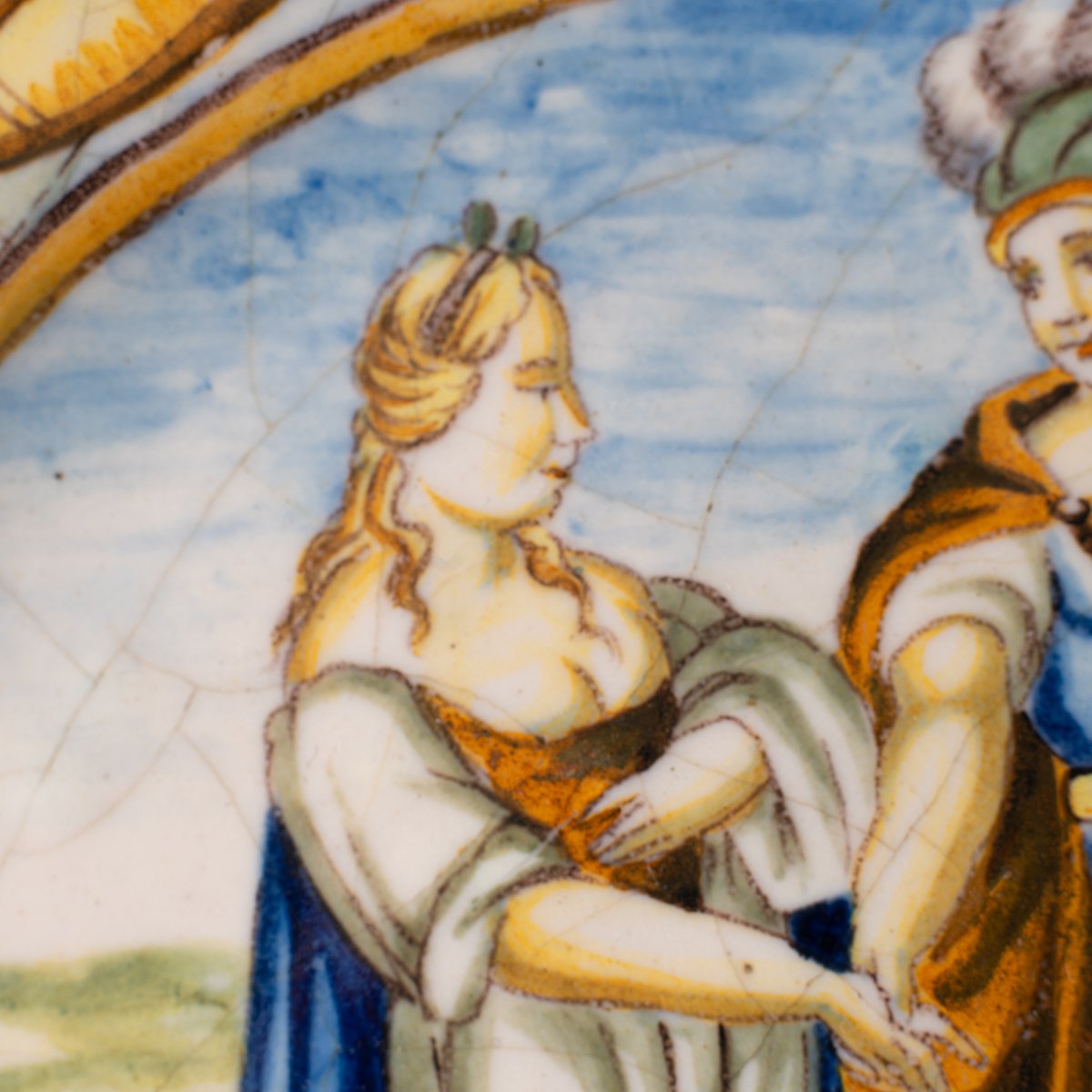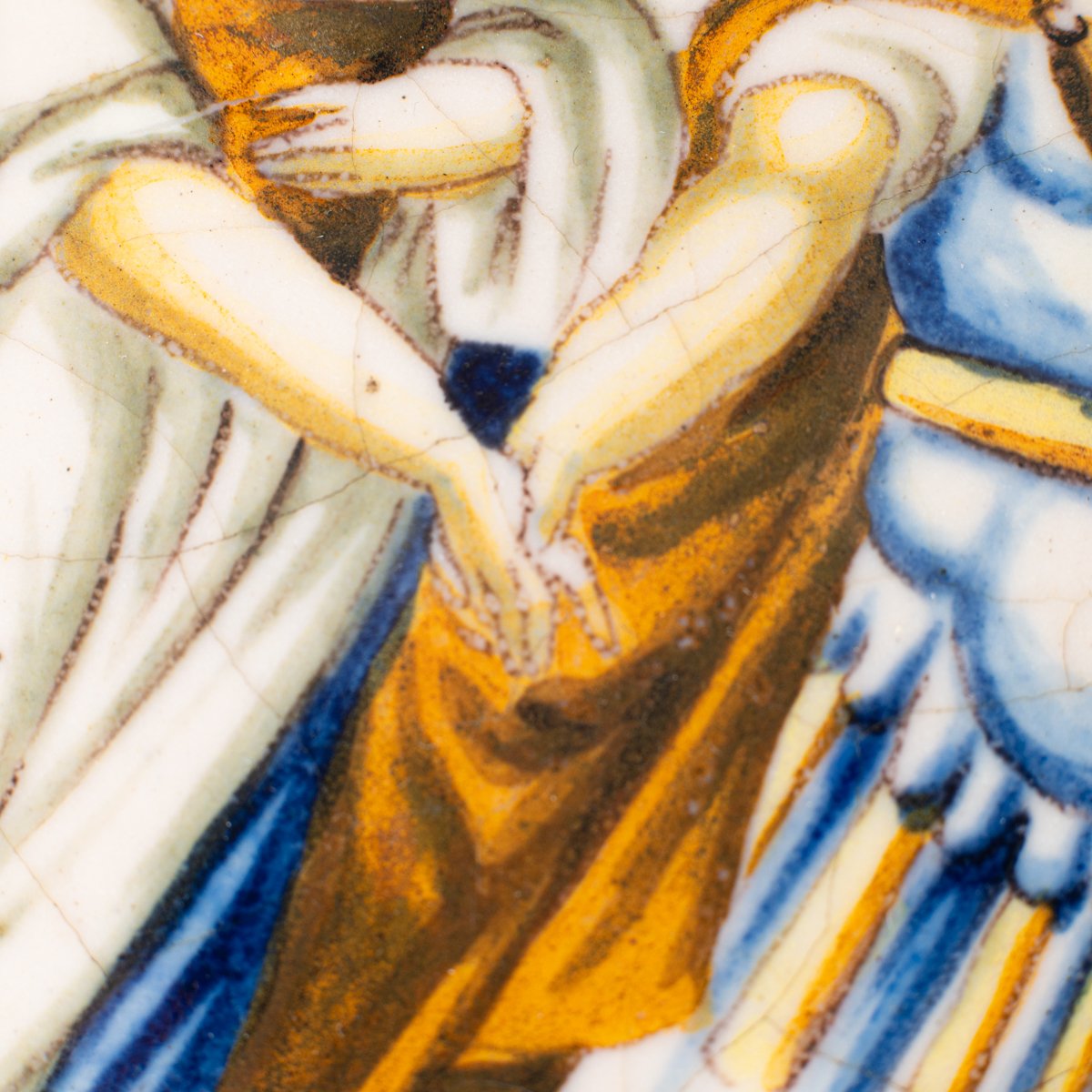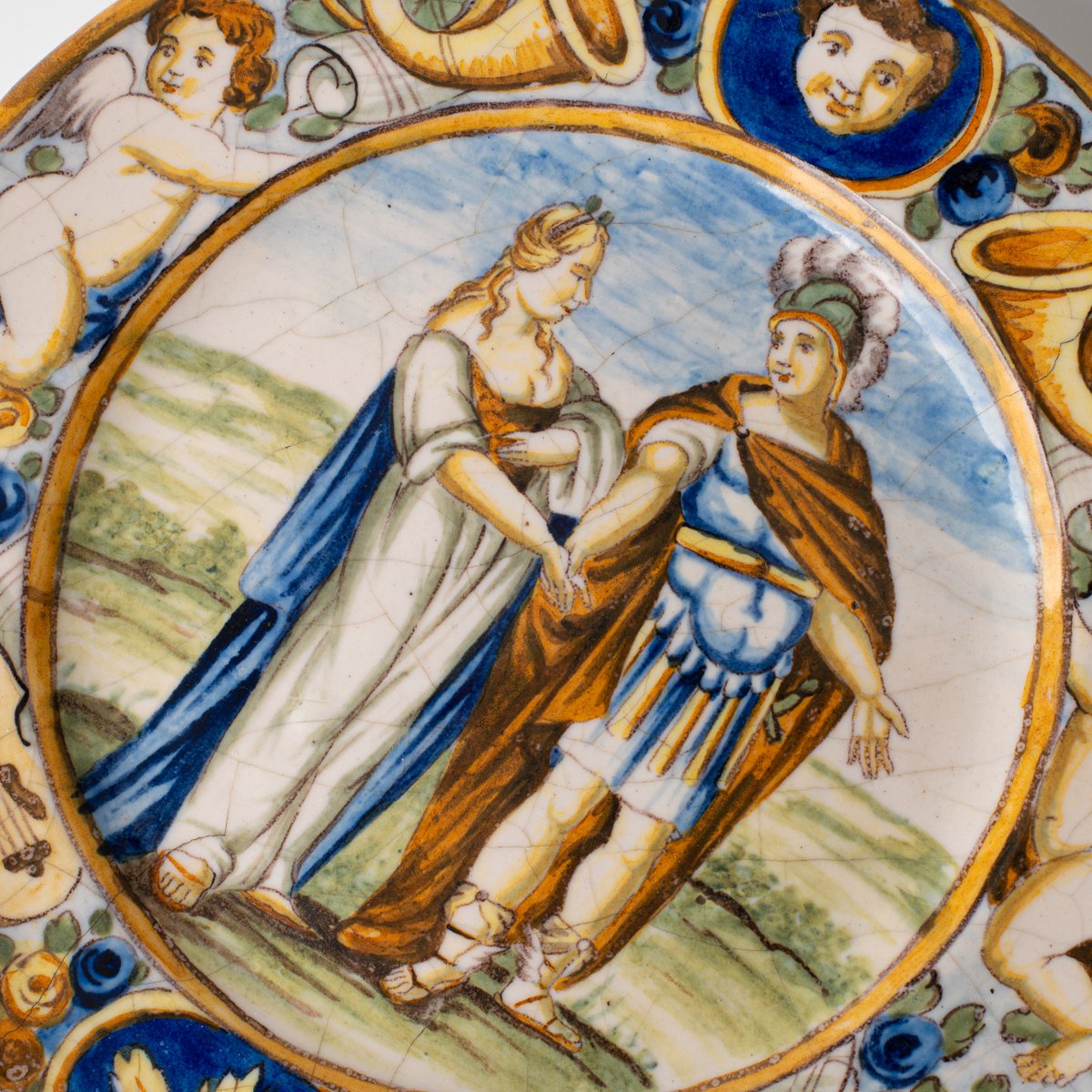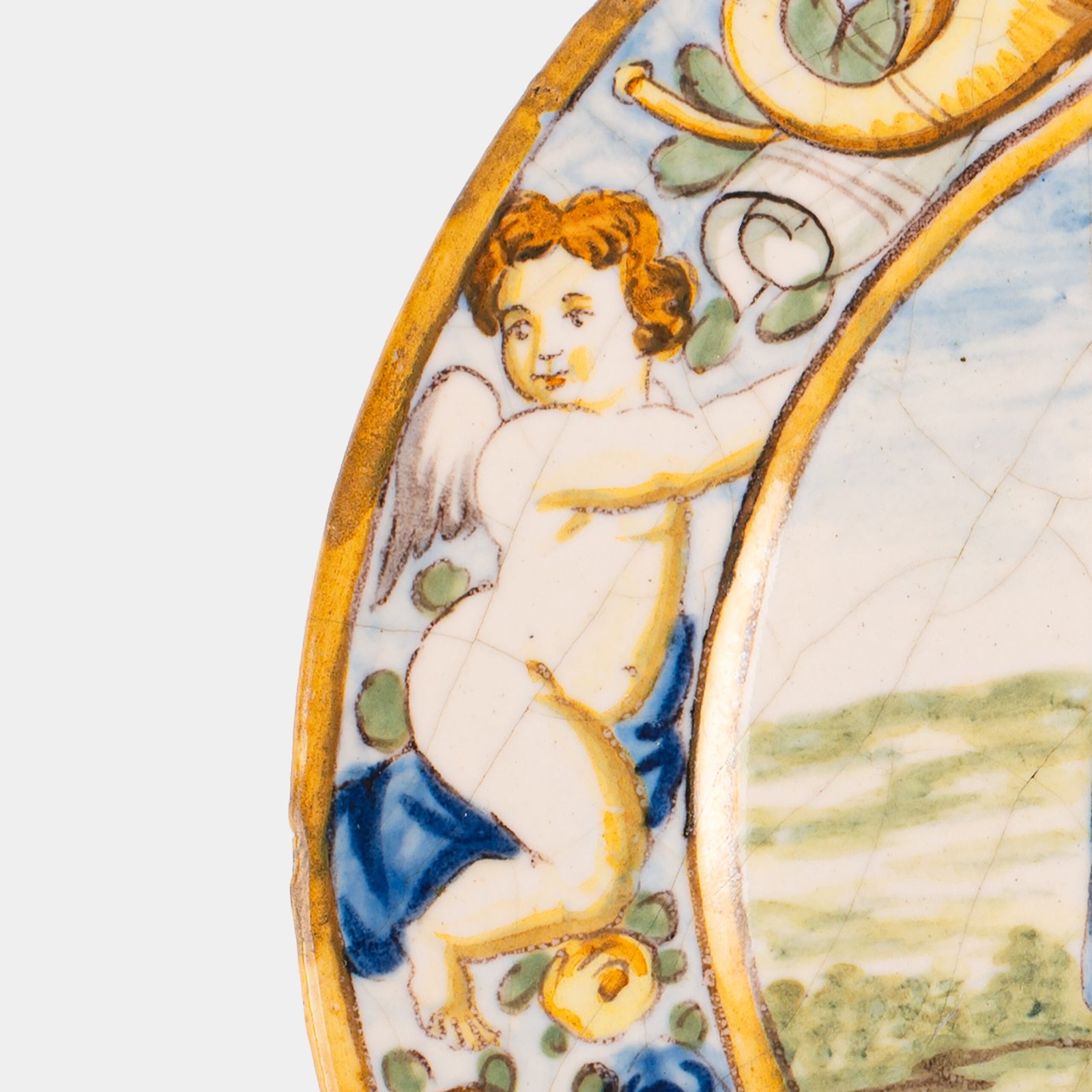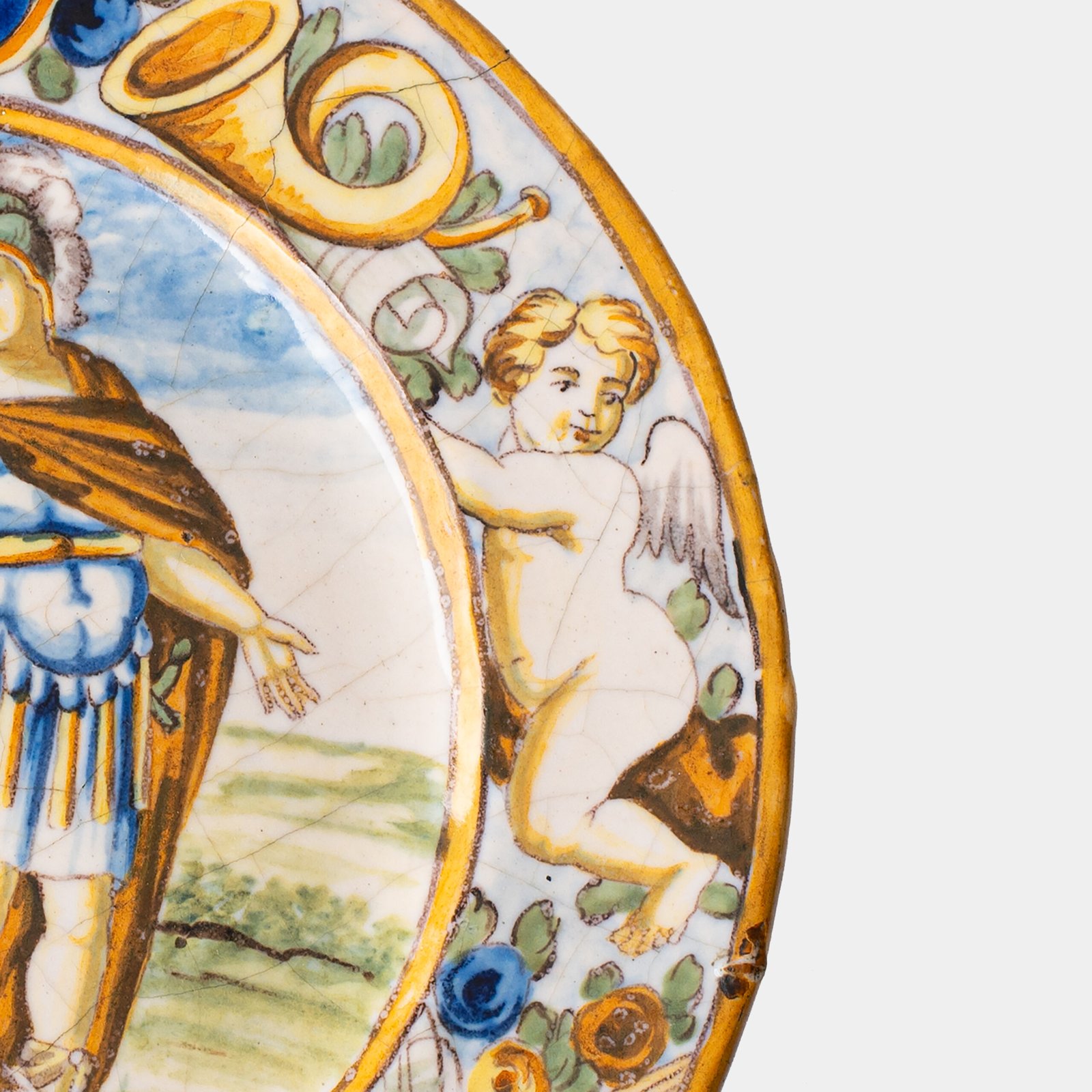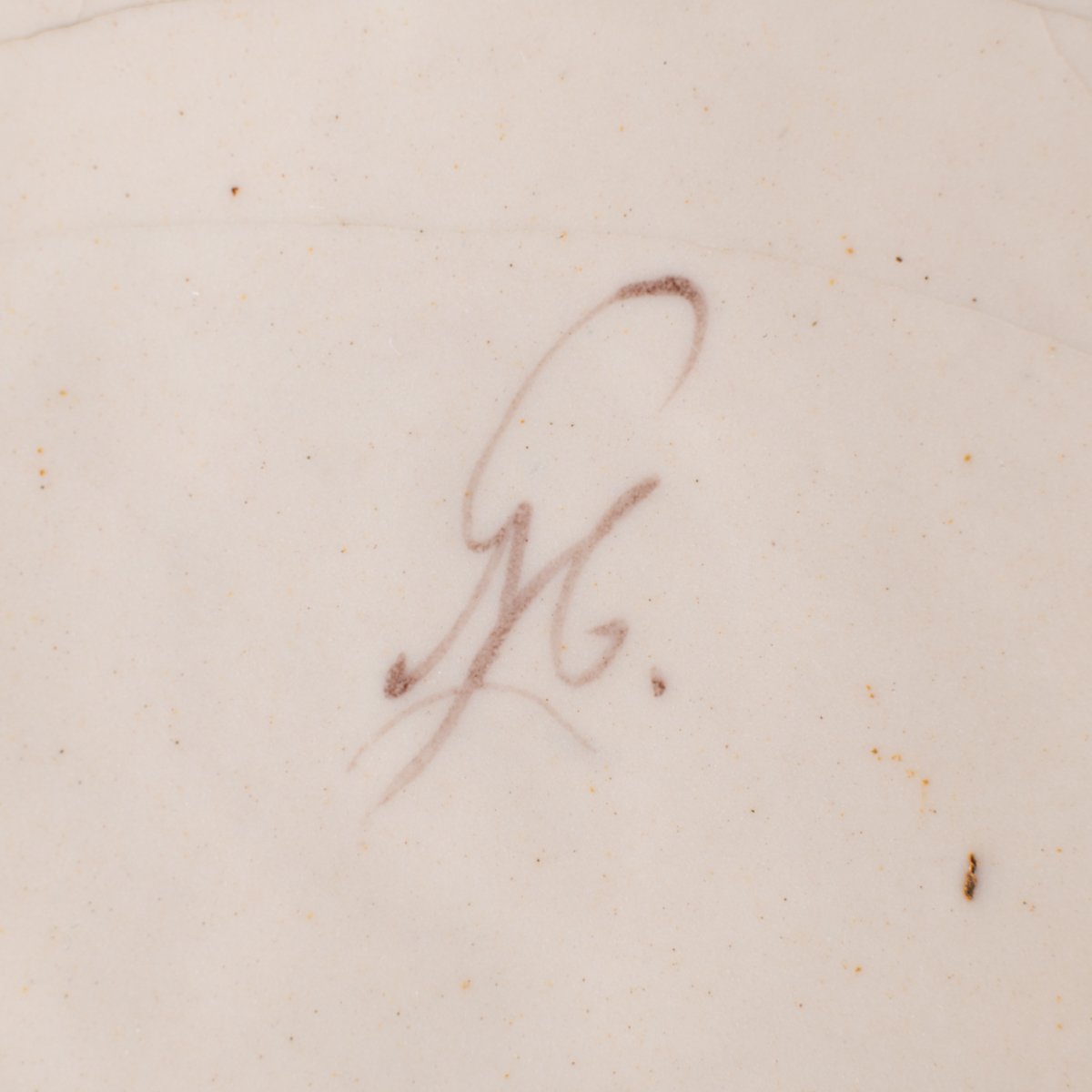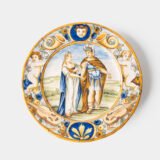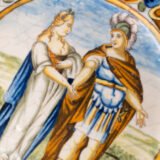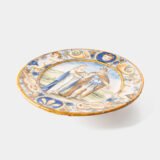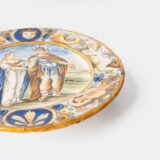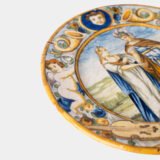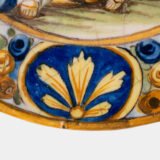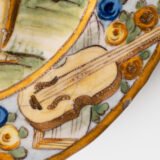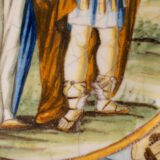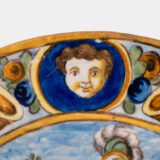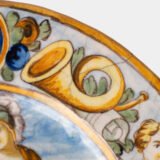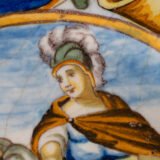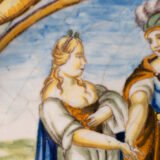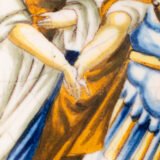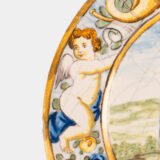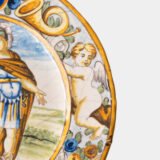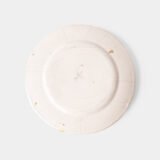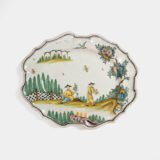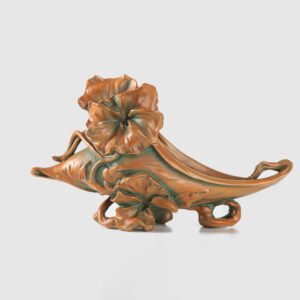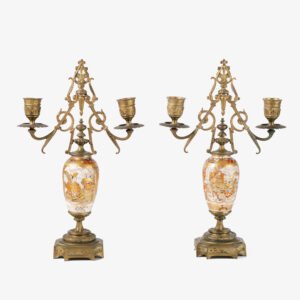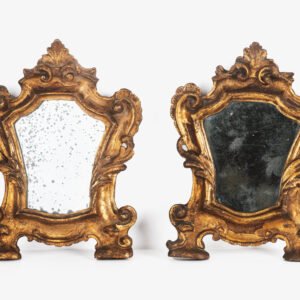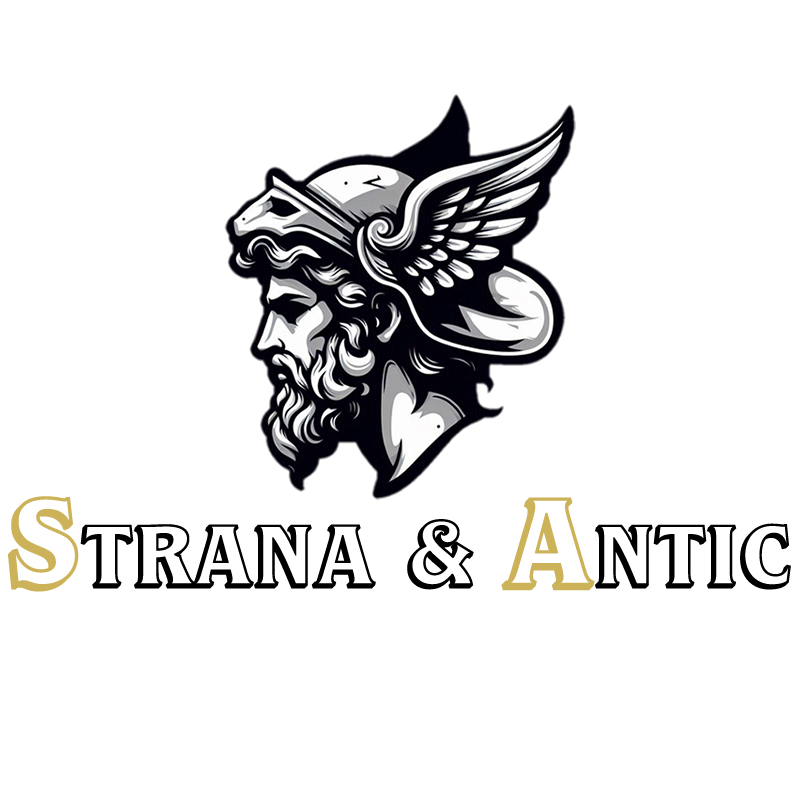Italian Maiolica Plate with Mercury and Allegorical Figure – Deruta or Urbino, Late 17th – Early 18th Century
$1,300.00
Baroque Italian maiolica plate, hand-painted in Deruta or Urbino circa 1680–1740. Depicts Mercury with winged sandals beside an allegorical female figure. Richly decorated border with musical instruments, cherubs and cartouches. A fine example of mythological istoriato pottery.
More information
Italian Maiolica Plate with Mercury and Allegorical Figure – Deruta or Urbino, Late 17th – Early 18th Century
Exceptional Italian maiolica plate, produced in Deruta or Urbino, in the late 17th or early 18th century, hand-painted with a mythological scene in the istoriato tradition characteristic of central Italian ceramics. The composition clearly features Mercury (Hermes in Greek mythology), identified by his winged sandals, feathered helmet, and classical cuirass, shown in symbolic interaction with an idealized female figure, possibly an allegory of Peace, Concord, or Wisdom.
The restrained yet expressive narrative treatment reflects a Mannerist aesthetic, reinterpreted through a Baroque lens. The figures are placed before a natural landscape and appear engaged in a gesture of alliance or farewell, typical of the allegorical language of the period.
The border is richly ornamented with musical instruments (lutes and horns), winged cherubs, and cobalt-blue cartouches with vegetal motifs. These elements are executed with refined brushwork and a vibrant palette dominated by cobalt blue, antimony yellow, and manganese ochres. The decorative frame not only enhances the composition but reinforces its symbolic and ceremonial character.
The plate measures 21.5 cm in diameter (8.46 in) and 1.8 cm in depth (0.71 in), and remains in very good condition for its age, with stable craquelure across the surface and three minor chips on the rim. On the reverse, the hand-painted initials “G M” are preserved beneath the glaze—likely the signature of a painter or workshop active in the region during the early 18th century.
This piece faithfully represents the persistence of mythological and allegorical subjects in Italian historicist maiolica during the Baroque period, with technical execution and compositional balance of remarkable quality. It is particularly suitable for discerning collectors, interior designers working with classical inspiration, or institutions specializing in European decorative arts.
Details
- Origin: Deruta or Urbino, Central Italy
- Period: Late 17th – early 18th century (c. 1680–1740)
- Material: Tin-glazed earthenware (maiolica)
- Technique: Hand-painted over tin glaze
- Dimensions:– Diameter: 21.5 cm (8.46 in)– Depth: 1.8 cm (0.71 in)
- Condition: Very good condition for its age; stable age-related craquelure and three minor rim chips
- Markings: Initials “G M” painted underglaze on the reverse

